Sony debuted the first Xperia Pro in early 2020; a device that we dubbed one of the only phones truly worthy of the ‘Pro’ suffix; with its skillset tailored towards industry-grade broadcasting over consumer use. Now the company has brought another Pro to market – the Xperia Pro-I – which takes a wholly different approach, aimed at a wholly different demographic.
Similarly to the previous Pro, the Pro-I builds on the company’s current flagship – the Xperia 1 III – with near-identical underlying hardware and a similar software experience, but it’s augmented by a bold new camera system that pushes past practically everything else currently out there; with the hopes of being perceived as a serious tool for creators and enthusiasts.
Design & build
- Strong metal-framed design w/ excellent grip
- IP65/68-certified dust & ingress protection
- Dedicated two-stage shutter button
- Additional shortcut key hard to use
It’s no secret that the Xperia 1 III serves as the foundation for the Pro-I’s build but the tweaks and changes Sony has made all serve to render the Pro-I both a more functional and resilient device. Even the fact that it can only be had in one colour (black, naturally), speaks to the more utilitarian approach Sony has taken with the Pro-I’s hardware.
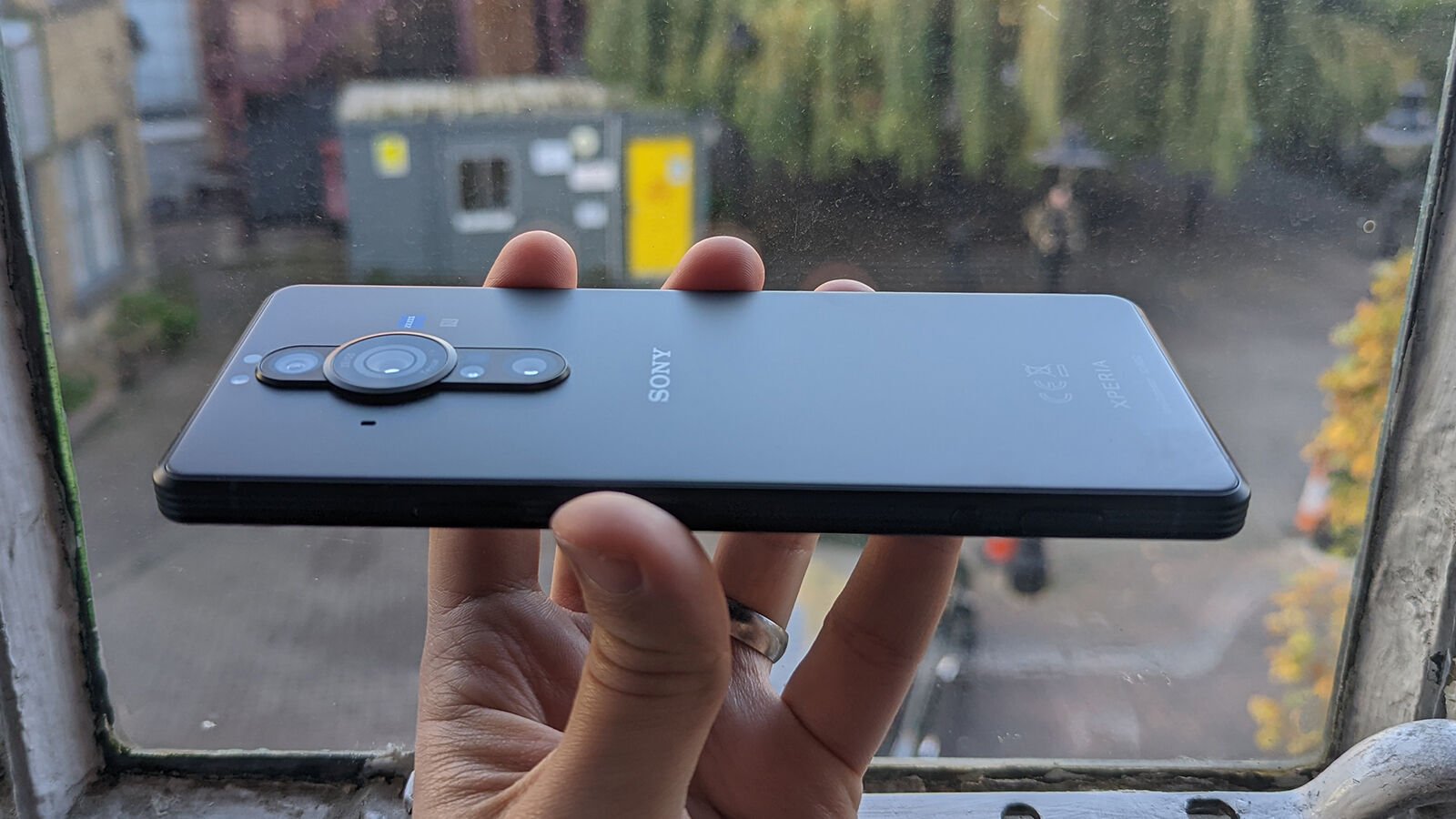
While you get the same Gorilla Glass Victus-protected display and frosted Gorilla Glass 6 back, they’re surrounded by a prominent new ‘waved-edge’ ‘blast-treated’ metal frame. Not only is it aesthetically bold, but it also offers excellent grip, thanks to rows of deep ridges.
The frame plays host to a familiar set of hardware controls, lifted from the 1 III (including a dual-detent knurled shutter button and a fingerprint sensor-laden power key), but there’s now an additional circular shortcut key and even an eyelet for a lanyard; which you might want to use, considering just how much the Pro-I costs.
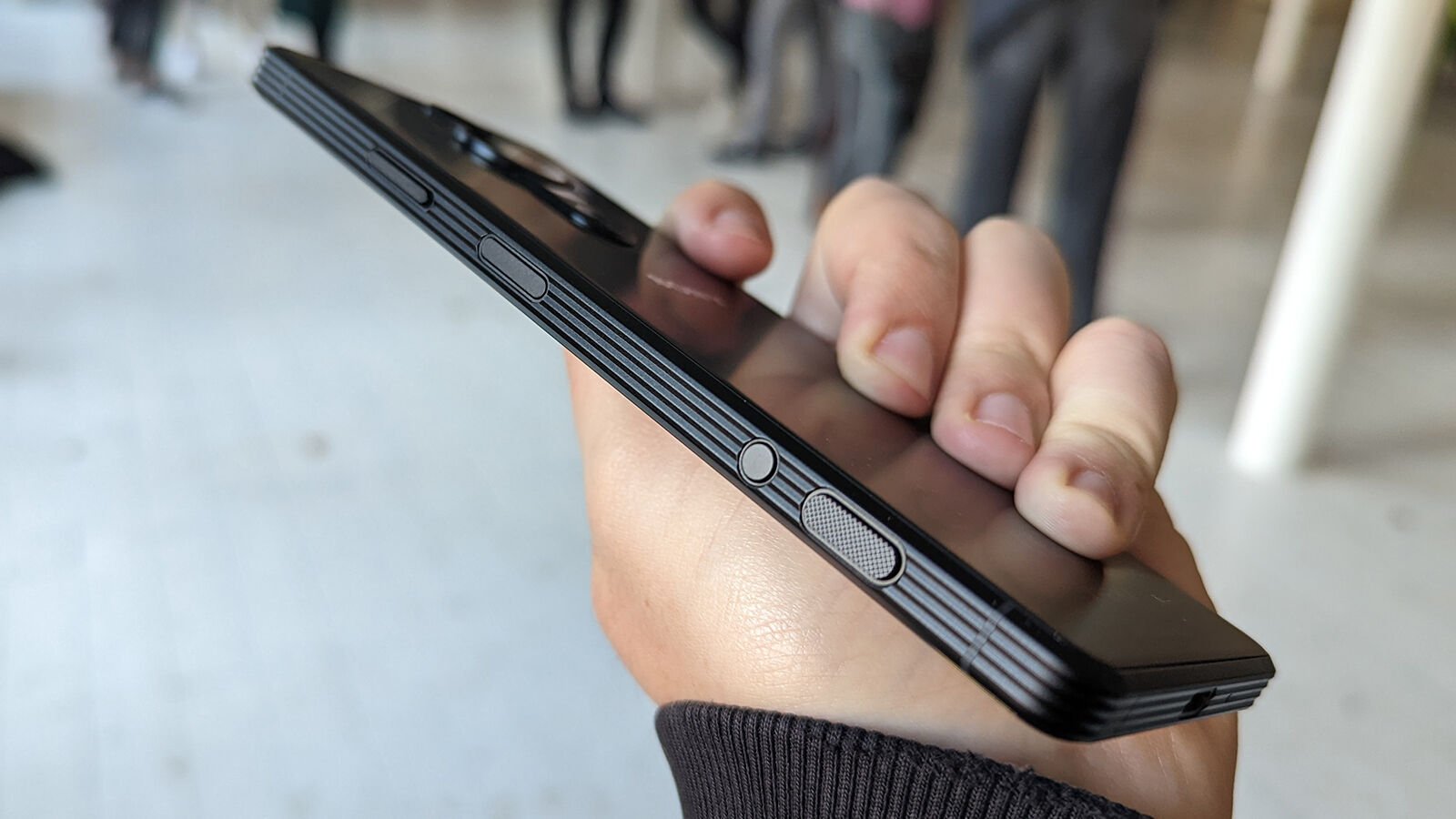
In stark contrast to the textured shutter button protruding from the bottom right of the phone’s frame, that new shortcut key sits flush against it, making it harder to feel out than you’d expect; something of a problem when you consider that its default function is to help you get to shooting video quickly (it can be reprogrammed, though).
Despite being a glass sandwich, like most premium handsets, the Pro-I’s robust metal frame helps the phone feel incredibly well put together and more durable than competitors – even without a case, while it also retains IP65/68 dust and water resistance, alongside Sony’s signature toolless SIM tray.
Display & audio
- 6.5in 120Hz 21:9 ‘CinemaWide’ display
- 10-bit colour (8-bit w/ 2-bit smoothing)
- 4K HDR OLED panel
- One-handed mode
Of all the elements that the Pro-I needed to crib from the Mark III, its display was at the top of the wishlist and, thankfully, Sony delivered.
As well as a distinct 21:9 ‘CinemaWide’ aspect ratio – which Sony turns to more than any other phone maker – the Pro-I is the only other phone to share in the 1 III’s impressive concoction of display technologies, with a 6.5in 120Hz 4K HDR-capable OLED panel on offer that boasts professional-grade colour calibration, white balancing and 10-bit colour support.
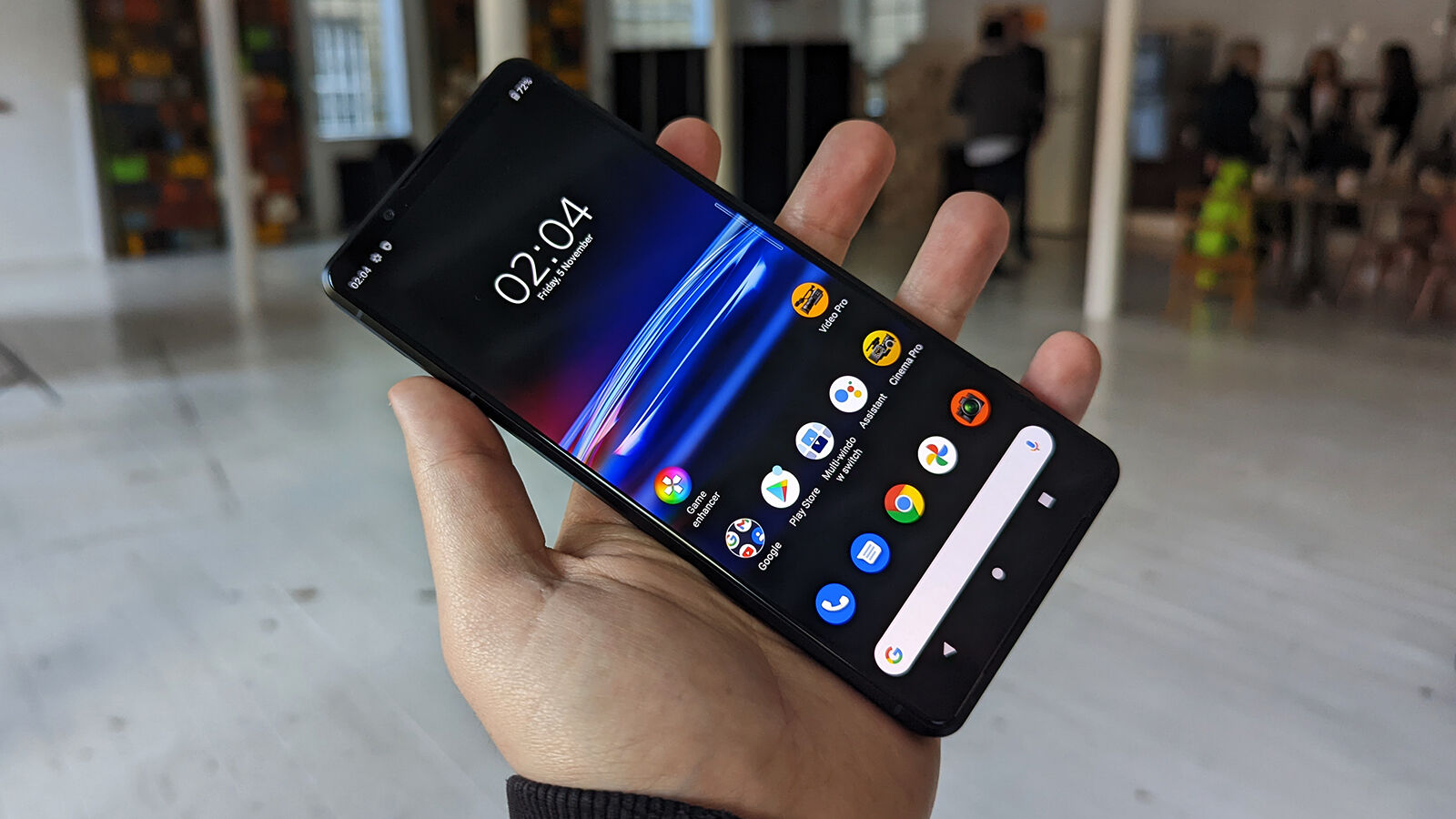
There are caveats to a panel like this, namely in finding ways to use it to its fullest. It’s tricky to source or stream native 4K HDR 120fps content and Sony’s display settings don’t allow complete manual control over what refresh rate and resolution the panel runs in (although it offers a lot of control over other aspects of the viewing experience). Better outdoor brightness would have been appreciated too, even if ‘Creator Mode’ pushes maximum output a little bit higher in select apps.
That tall aspect ratio is superb for split-screen multitasking, while the inclusion of a one-handed mode is even more important with the Pro-I’s wider 8.9mm body, compared to the 1 III’s 8.2mm frame.
Audio
- Hi-Res Audio, Hi-Res Audio Wireless, 360 Reality Audio & DSEE Ultimate support
- “Full-stage” front-facing stereo speakers
- 3.5mm headphone jack
When a phone boasts ‘stereo speakers’ it’s a toss-up as to whether the manufacturer has implemented superior front-firing output with a balanced sound, or an earpiece/down-firing combination, where the former handles treble while the other places a bias on bass tones.
Thankfully, in the case of the Pro-I, it’s the latter, with decent clarity and clear stereo separation. Although the hardware and layout at play are likely identical to that used by the Xperia 1 III, in side-by-side comparisons, the Pro-I doesn’t offer quite the same level of clarity and tone as expected, presumably as a result of the physical differences found in the phone’s bigger body.
Another rarity in the wider phone market nowadays – particularly in the flagship space – is the inclusion of an integrated 3.5mm headphone jack and Sony hasn’t let fans down here, either. Pair that with the gamut of high-quality audio standards and technologies that the company likes to make sure its best phones support (High-Resolution Audio, High-Resolution Audio Wireless, 360 Reality Audio, DSEE Ultimate) and you can expect great quality sound, whether you enjoy listening through wired or wireless headphones.
Software & features
- Launches on Android 11
- Unconfirmed OS update path
- Great split-screen multitasking
- Clean user experience w/ Side Sense & Game Enhancer
With the exception of the new Video Pro app (coming up in the Camera section) and that new programmable shortcut key, there’s little to differentiate the Pro-I’s user experience from the one found on the 1 III, but that’s no bad thing.
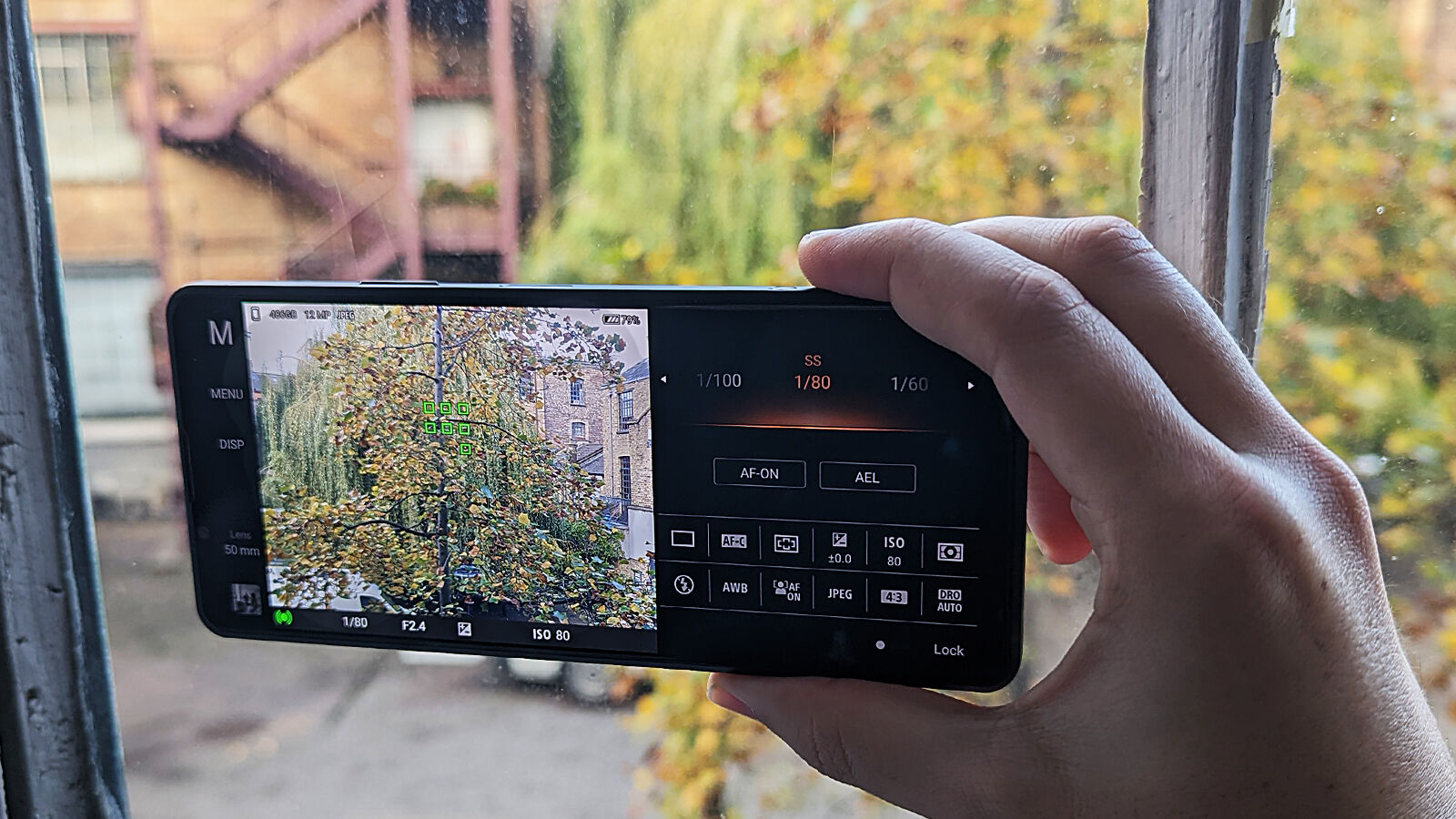
Sony has taken a metred approach to modifying Android, with a clean experience that should be familiar or at least intuitive to users of other mainstream devices from the likes of Google, Motorola, Nokia and so on.
The aforementioned split-screen functionality is particularly well implemented, while Sony-specific features like Side Sense (a system-wide shortcut menu accessed by double-tapping against the edge of the UI) and Game Enhancer (which lets you manage notifications, tweak visuals and record gameplay) are nice extras that feel considered and genuinely useful.
Despite Android 12 already having launched by the time the Xperia Pro-I arrived on the market, the phone sported Android 11 out of the box, with Sony only confirming that the Xperia 1 III would be getting two OS updates in its lifetime; leaving the state of long-term software support for the Xperia Pro-I decidedly murkier (however, it’s assumed that the same two OS update cycle applies).
Performance
- Qualcomm Snapdragon 888 SoC
- microSD expandable up to 1TB
- 512GB internal storage
- 12GB RAM
Despite launching towards the tail end of the Snapdragon 888+’s time in the limelight, as Qualcomm’s top-tier mobile chipset (before it was replaced by the 8 Gen 1 in late December 2021), the Xperia Pro-I sticks with the same standard 888 that also powers the Xperia 1 III. This comes paired to 12GB of RAM and 512GB of internal storage which can – rather impressively – be expanded via microSD by an additional 1TB).
As such, while there’s more room for media (ideal when shooting in high-fidelity codecs), performance is on-par with the Mark III, which itself was exceptional at launch, but may not stand the test of time compared to flagships running on the newer 888+ (or 8 Gen 1).
Note: The benchmark results above reflect the phones running at Full HD+ resolution, with 120Hz refresh rate mode enabled, however, not all tests are able to leverage frame rates above 60fps.
In testing, the Xperia Pro-I handles just as well as the 1 III, with strong benchmarking scores and tangible real-world fluidity that spans general use, gaming, multitasking and camera usage. As with so many Sony phones, however, heat build-up was never far away from becoming a concern, with extended gaming sessions resulting in notable warming and warnings strewn throughout the UI when accessing high-power features like the camera app.
Battery
- 4500mAh battery
- No wireless charging
- Power adapter in-box
- 30W wired fast charging
For a flagship phone with some demanding hardware (namely its display and camera), the 4500mAh battery in the Pro-I feels a little on the small side, both on paper and in practice.
As the benchmarks show, it only outlasted the 1 III by a little, and a number of its top-tier competitors have moved to more capacious cells to keep step with the higher demands modern flagships are subjected to; resulting in noticeably better longevity, by comparison.
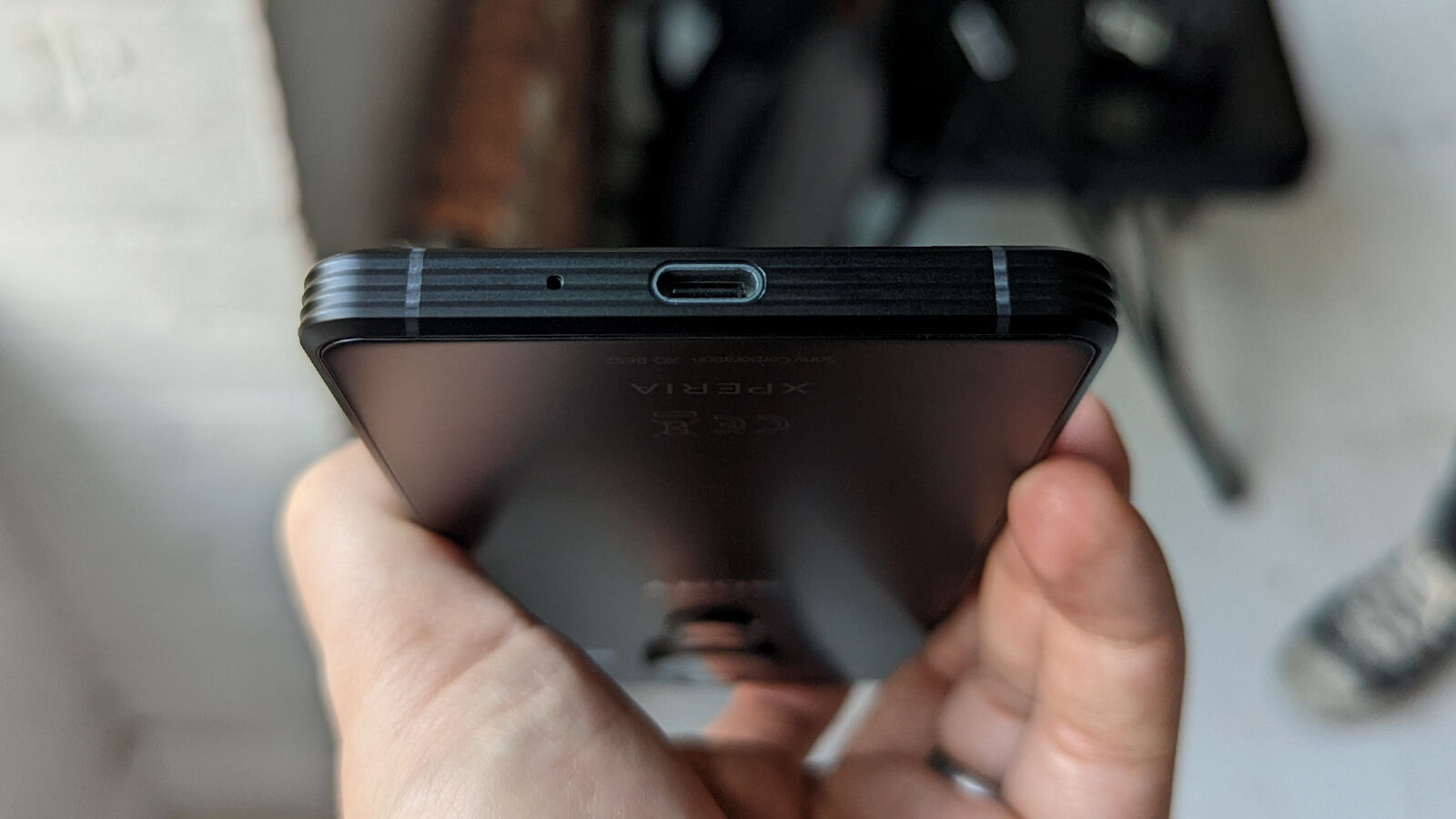
The Xperia Pro-I should be able to make it through a day on a charge, but at an average 5.5 hours of screen-on time, don’t expect much more without some conservative handling.
One silver lining is the power adapter that Sony includes in-box (no longer a guarantee from rivals like Samsung and Apple). While 30W charging speeds aren’t the most competitive, you can still get the phone up above 50% charge in half an hour (and most of the way to 100% in 90 minutes).
Of the numerous changes that Sony has made in effectively turning the Xperia 1 III into the Pro-I, the loss of wireless charging as a feature is a disappointment that undermines the phone’s intended premium standing.
Cameras
- 12Mp variable f/2.0 / f/4.0 24mm 85° main 1in sensor w/ dual-PDAF & OIS
- 12Mp f/2.2 16mm 124° ultrawide w/ dual-PDAF
- 12Mp f/2.4 50mm 48° 2x telephoto w/ dual-PDAF & OIS
- 3D iToF sensor
- Supports Photo Pro, Cinema Pro & Video Pro apps
As to why wireless charging isn’t part of the equation on the Pro-I, all you need do is glance around back. The whole reason this phone exists is embodied in the bold new camera hardware; with a sizeable primary lens positioned down the centre line of the phone’s rear.
The Pro-I is part of a very select group, not just because of its impressive display but due to the fact that its revised camera system leads with a huge 1in Sony Exmor RS CMOS sensor. In fact, it’s the same sensor that’s found on the company’s beloved RX100 VII compact camera; a technical achievement to feature on a phone, to be sure.
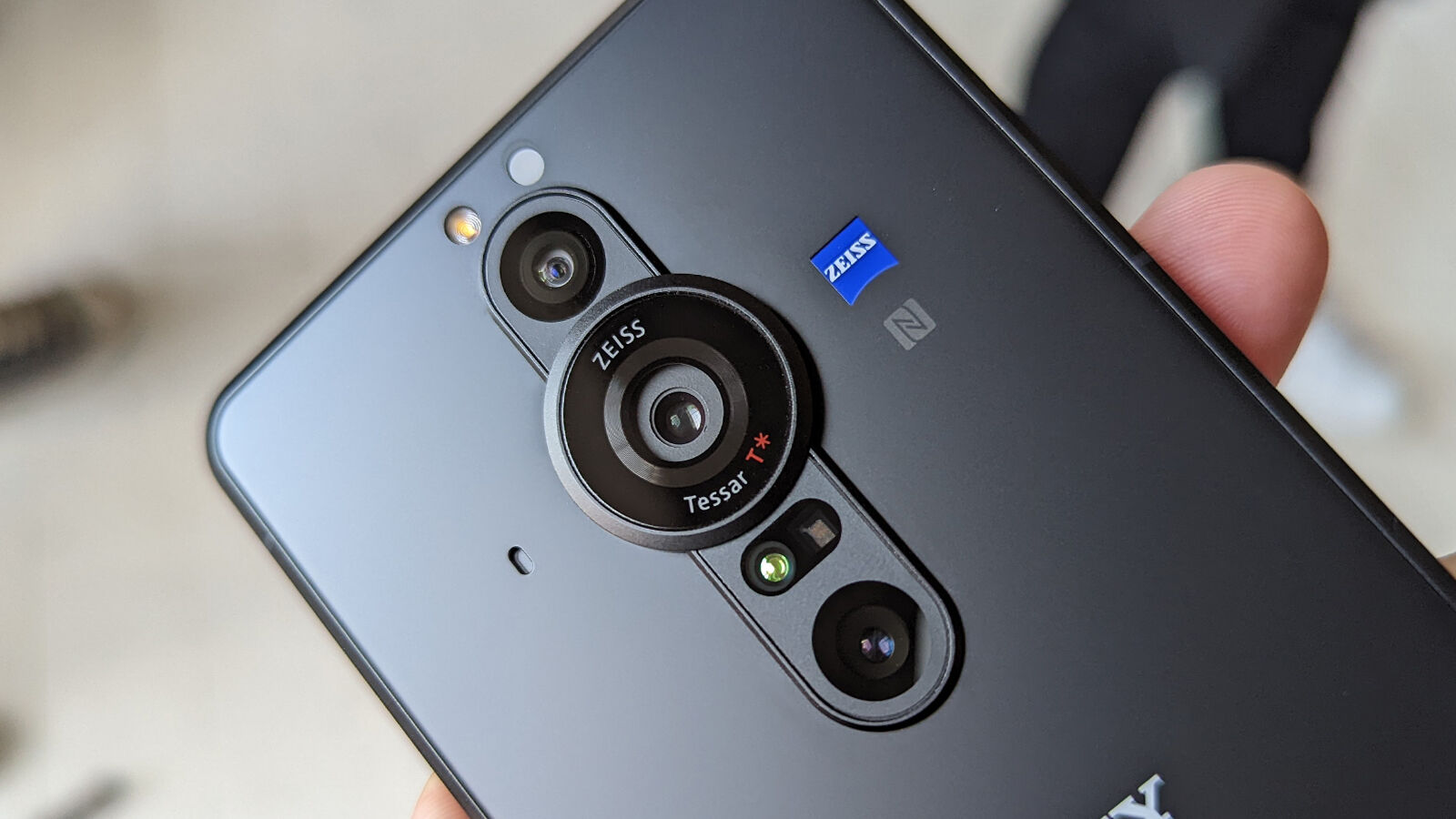
On the Pro-I, it comes paired with a dual aperture setup (reminiscent of the system seen on Samsung’s Galaxy S9 series) that can flip between f/2.0 and f/4.0, while the sensor itself sports impressively large 2.8μm pixels that are ideal for gathering in more light than the average smartphone sensor (most of which resort to combining the data from multiple pixels at the expense of resolution to achieve the same effect).
While most phones rely on plastic, this optically stabilised sensor also employs glass lens elements; promising greater image clarity and reduced reflectivity (supported by a Zeiss T*-branded optical coating). There’s a flip-side to this bold new system, however.
The slim profile of the phone (compared to a compact camera, at least) means there isn’t enough space for the Pro-I to properly leverage the full might of that 20Mp sensor, resulting in a 12Mp effective resolution, cropping to an equivalent 1/1.3in sensor size.
In terms of colour, contrast and dynamic, range, even in Auto mode, Sony’s top Xperias usually make you work for great results out of the gate and that’s especially true of the Pro-I’s imaging experience. It’s built around not two (as on the Xperia 1 III) but three imaging apps: Photo Pro, Cinema Pro and the new Video Pro app.
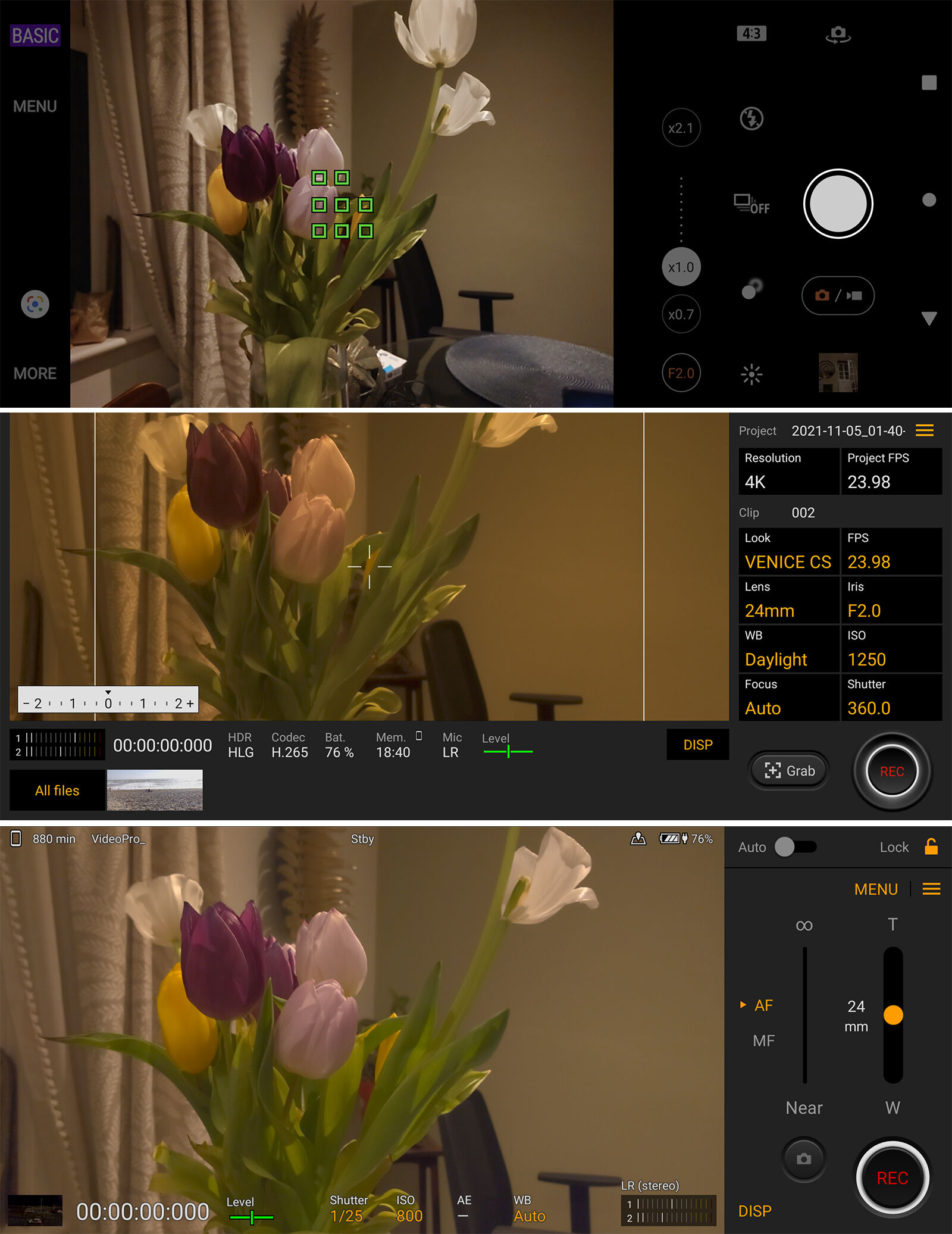
There’s a confusing amount of cross-over between the latter two apps, with Video Pro (a new addition on the Pro-I) placing a greater focus on the various aspects of manual control that the phone’s camera system facilitates, while Cinema Pro better serves those looking to emulate professional cameras (namely Sony’s own Venice cinema cameras); with a gamut of pre-loaded LUTs (lookup tables – predefined real-time camera profiles that govern colour science and grading, when applied).
What Sony’s software does afford is unprecedented native control over the still and video capture process, and paired with that sizeable sensor, content has the potential to look fantastic. The reality is a little more complicated, however…
By now you’ll have likely realised that this isn’t the phone for those who just want to point and shoot but rewards those who enjoy labouring over the flat RAW stills and LOG video files. Provided you’re patient, the results can be really brilliant, but with a workflow that so closely emulates the company’s Alpha cameras, those who like the convenience of a traditional smartphone snapper will likely feel alienated by the Pro-I’s user experience.
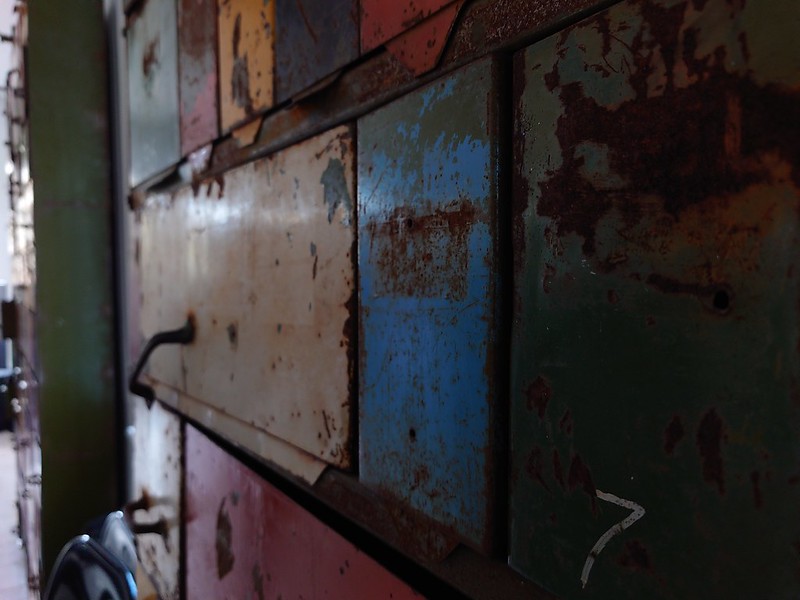
Aspects like dynamic range aren’t as wide, based on results straight out of the camera, while even when set at its widest f/2.0…
